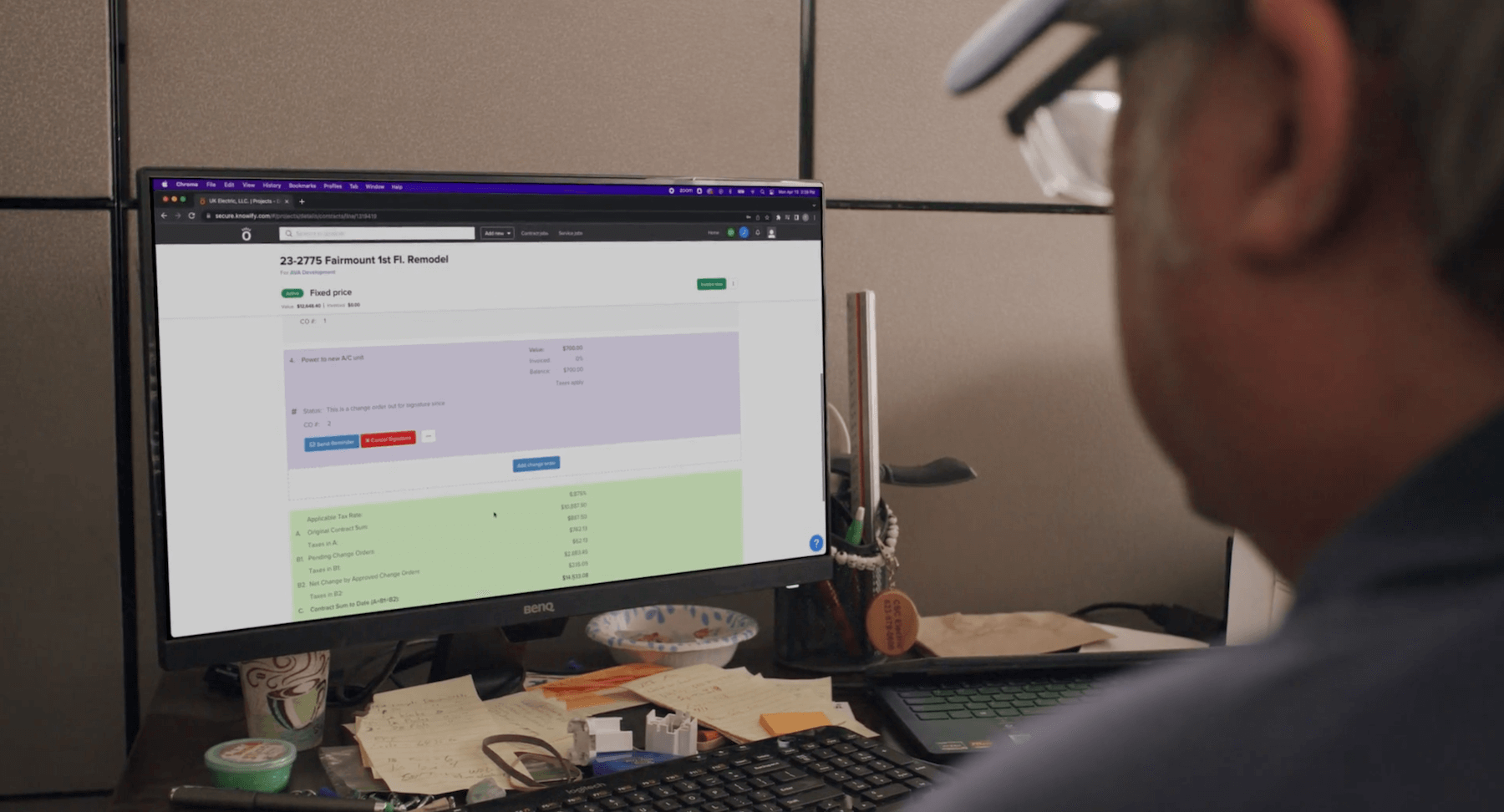Released in September of 2022, the Associated Builders and Contractors released its latest tech report. This report provides the latest information and data on new technology in construction and innovation within the industry. The report details how investment in technology can lead to higher profits, safer job sites, and more jobs.
The main takeaway from last year’s report in 2021 was that there is still plenty of room for the industry to adopt various forms of technology. As part of the report, a survey was conducted amongst ABC contract members. One of the survey questions asked– “what office project management software is your business using?” Over 51% of respondents said they use Microsoft Excel for office project management. This highlights the need for contractors to use purpose-built software explicitly made for them. Leveraging software made intentionally for the construction industry will help contractors make data-driven decisions with more organized business operations throughout.
To further show that business owners can maximize their impact through technology, the 2022 report presented several case studies to give real examples of how those in the industry are leveraging new technology.
Robots, drones, and job site safety
Robotics and their ever-expanding functionality present an intriguing opportunity for new technology in construction. The first case study of the report details how HITT Contracting adopted robotics to improve workplace safety. Partnering with HILTI, they utilized a semi-autonomous Jaibot to drill ceiling anchors. This is usually an arduous and dangerous task. Through the use of robotics, they were able to complete a 10-day task in only four hours. They are drastically increasing productivity with the added benefit of no risk or safety incidents to crew members. This type of robotic technology also has the capacity to improve job site communication as it can capture images and send them over far distances. They believe that robotics have the power to create a more sustainable and safer work environment for field operations.
While robotics assist on the ground, they can also help from above. Unmanned ariel vehicles, also known as drones, are becoming increasingly popular amongst contractors in many different trades. While a Jaibot brings a high price point drones do not. Many commercial drones come at an affordable price compared to ground robotics. Harkins believes they demonstrate a high return on investment through their ability to improve project documentation and safety and quality control.
In a project to build a new 198,459-square-foot luxury senior living community, Harkins used a DJI Mavic 2 Pro drone to assist with the planning, design, and execution of the project. Drones are capable of pre-planned flights in which the drone will fly at a predetermined path and elevation. In the past, they took progress pictures several times a week as best they could. Utilizing a drone, however, they could efficiently and cost-effectively capture aerial imagery through an automatic flight plan on the perimeter of the job site.
From these images, they created high-quality overlays (aerial images of the jobsite with a uniform scale) that proved to be an excellent tool for coordination and progress tracking. As a result, they could better evaluate progress payments, safety, and quality control. They even found an issue with a column that needed to be aligned. The column was corrected before concrete was poured, saving thousands of dollars in replacement costs and schedule delays.
Depending on your trade, drones are a cost-efficient way to improve operations for specific trades. Roofing contractors, for example, can use drones to inspect a roof to identify problem areas without putting their crew at risk.
How data can transform the construction industry
Beyond robots and drones, a key focus of the report was the power that data acquisition and decision-making can have on your business. Gaylor Electic utilized past data to understand their business better. First, they asked themselves, “What do our purchasing habits tell us about project performance?” Next, they looked at the total job cost/average purchase order amount. Their goal was to determine if they were making several small purchases or fewer large purchases in bulk.
Their findings? The quality of planning is crucial for job-level profit. Profitability increased as the size of purchases increased. Projects with a clearly defined breakdown of work were more successful than those not broken down. Finally, they could make large purchases with more confidence when they went into a project with a well-thought-out plan. Only through the right tools that allowed them to capture and evaluate this data were they able to reveal these business insights.
Nexen Construction shared how software adoption rapidly improved their bidding volume. Previously they had used Excel to estimate and create bids. They felt their process was burdensome and slow. Affecting the number of proposals that could be sent, and in turn, jobs won. To address this, they adopted STACK estimating software. By taking the time to learn and implement the software, they saw a dramatic 41% increase in bid volume. By adopting a purpose-built software solution, Nexen was able to overhaul a previously tedious process into an organized and efficient aspect of their business.
Impetus, highlighted in their case study how creating a data-driven culture was paramount to their success. They made digital strategies a priority by investing in technology and state-of-the-art methodologies. Through a fully cloud-based infrastructure, they optimized nearly all of their operations. These tools have unlocked a new knowledge base and a means of analyzing business processes that fosters continuous improvement and yields better results.
Takeaways
The report featured many more case studies exploring how contractors are utilizing new technology in construction. So we encourage you to read the report to learn more. Looking at all the case studies, it’s clear the value that an industry-specific solution can bring to a construction business, large or small. The report’s theme centered around how technology can prevent higher job costs and enables firms to scale sustainably. In addition, most case studies champion the ability to have real-time data that is easily accessible.
Faster schedules, tight margins, and labor shortages create an environment where businesses must adapt to overcome these challenges. The 2022 tech report exemplifies companies looking towards new technology in construction and digital strategies to gain a competitive advantage. At Knowify, we believe that construction management software allows you to build your business with confidence. Seeing is believing, and we’ll show you a paperless, efficient, and robust digital future for your business. Schedule a 30-minute demo with Knowify today.
 QuickBooks
PricingTraining & support
QuickBooks
PricingTraining & support



